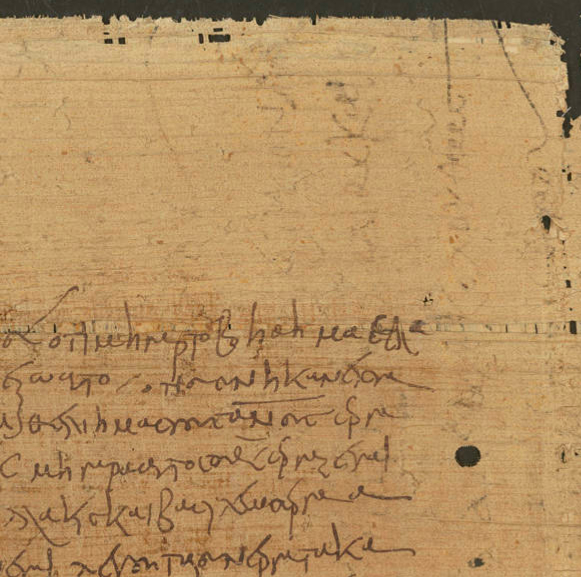A question concerning papyrus (rather than parchment) palimpsests came up recently in the comments over on Bart Ehrman’s blog. I thought I would post here a good example of a papyrus palimpsest, namely the papyrus codex containing the commentary on the Psalms by Didymus the Blind. This codex was discovered in Tura, Egypt in 1941 (I discussed the discovery of the books here and linked to some actual black and white archival film of the site of the discovery in 1941 here). Whoever constructed the codex containing the commentary on the Psalms used recycled papyrus. The papyrus was first used for a document. At some later point, the document was rotated 90 degrees and cut into sheets. The ink that was originally on the papyrus had been washed off, but whoever cleaned the papyrus did a kind of spotty job. Here is an image of one of the leaves of this codex kept at BYU. The horizontal writing is Didymus’s commentary, but in the background you can see traces of the earlier writing (which is oriented perpendicularly to the writing of the commentary). Can you see the Greek letters nu (N) and kappa (K) in the upper margin?

Tura Codex V, Commentary on the Psalms by Didymus the Blind; image source: BYU Library Digital Collections

